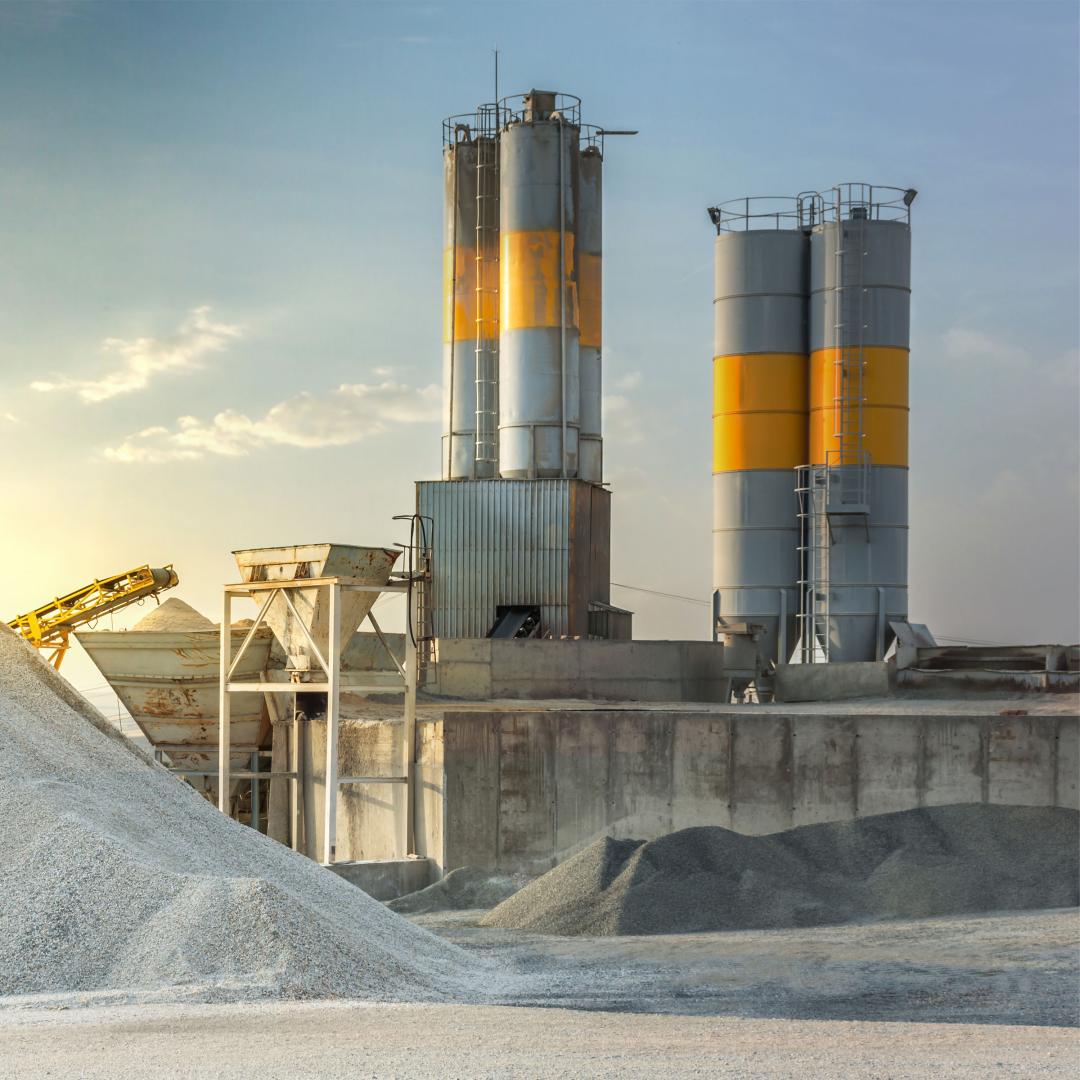References
Afsah, S. (2004). CDM potential in the cement sector: The challenge of demonstrating additionality. Performeks LLC. https://www.performeks.com/media/downloads/CDM-Cement%20Sector_May%202004.pdf
Cannon, C., Guido, V., & Wright, L. (2021). Concrete solutions guide: Mix it up: Supplementary cementitious materials (SCMs). RMI. https://rmi.org/wp-content/uploads/2021/08/ConcreteGuide2.pdf
Cao, Z., Masanet, E., Tiwari, A., and Akolawala, S. (2021). Decarbonizing concrete: Deep decarbonization pathways for the cement and concrete cycle in the United States, India, and China. Industrial Sustainability Analysis Laboratory. https://www.climateworks.org/wp-content/uploads/2021/03/Decarbonizing_Concrete.pdf
Cavalett, O., Watanabe, M. D. B., Voldsund, M., Roussanaly, S., & Cherubini, F. (2024). Paving the way for sustainable decarbonization of the European cement industry. Nature Sustainability, 7, 568–580. https://doi.org/10.1038/s41893-024-01320-y
CEMBUREAU. (n.d.) Clinker substitution. Retrieved August 7, 2024, from https://lowcarboneconomy.cembureau.eu/5-parallel-routes/resource-efficiency/clinker-substitution/
Clark, G., Davis, M., Shibani, & Kumar, A. (2024). Assessment of fuel switching as a decarbonization strategy in the cement sector. Energy Conversion and Management, 312, 118585. https://doi.org/10.1016/j.enconman.2024.118585
ClimeCo. (2022). Low carbon cement production. https://www.climateactionreserve.org/wp-content/uploads/2022/10/Low-Carbon-Cement-Issue-Paper-05-20-2022_final.pdf
Daehn, K., Basuhi, R., Gregory, J., Berlinger, M., Somjit, V., & Olivetti, E. A. (2022). Innovations to decarbonize materials industries. Nature Reviews Materials, 7, 275–294. https://doi.org/10.1038/s41578-021-00376-y
de Puy Kamp, M. (2021, July 9). How marginalized communities in the South are paying the price for ‘green energy’ in Europe. CNN. https://edition.cnn.com/interactive/2021/07/us/american-south-biomass-energy-invs/
European Cement Research Academy. (2022). The ECRA technology papers 2022: State of the art cement manufacturing, current technologies and their future development. https://api.ecra-online.org/fileadmin/files/tp/ECRA_Technology_Papers_2022.pdf
Georgiopoulou, M., & Lyberatos, G. (2018). Life cycle assessment of the use of alternative fuels in cement kilns: A case study. Journal of Environmental Management, 216, 224–234. https://doi.org/10.1016/j.jenvman.2017.07.017
Glenk, G., Kelnhofer, A., Meier, R., & Reichelstein, S. (2023). Cost-efficient pathways to decarbonizing Portland cement production. ZEW - Centre for European Economic Research Discussion Paper No. 23-023. https://doi.org/10.2139/ssrn.4434830
Global Cement and Concrete Association. (2021). Concrete future: The GCCA 2050 cement and concrete industry roadmap for net zero concrete. https://gccassociation.org/concretefuture/wp-content/uploads/2021/10/GCCA-Concrete-Future-Roadmap-Document-AW.pdf
Goldman, S., Majsztrik, P., Sgro Rojas, I., Gavvalapalli, M., Gaikwad, R., Feric, T., Visconti, K., & McMurty, B. (2023). Pathways to commercial liftoff: Low-carbon cement. U.S. Department of Energy. https://liftoff.energy.gov/wp-content/uploads/2023/09/20230918-Pathways-to-Commercial-Liftoff-Cement.pdf
Gómez, D. R., & Watterson, J. D., et al. (2006). Stationary combustion. In S. Eggelston, L. Buendia, K. Miwa, T. Ngara, & K. Tanabe (Eds.), 2006 IPCC guidelines for national greenhouse gas inventories (Vol. 2). Institute for Global Environmental Strategies (IGES) for the IPCC. https://www.ipcc-nggip.iges.or.jp/public/2006gl/pdf/2_Volume2/V2_2_Ch2_Stationary_Combustion.pdf
Griffiths, S., Sovacool, B. K., Furszyfer Del Rio, D. D., Foley, A. M., Bazilian, M. D., Kim, J., & Uratani, J. M. (2023). Decarbonizing the cement and concrete industry: A systematic review of socio-technical systems, technological innovations, and policy options. Renewable and Sustainable Energy Reviews, 180, 113291. https://doi.org/10.1016/j.rser.2023.113291
Habert, G., Miller, S. A., John, V. M., Provis, J. L., Favier, A., Horvath, A., & Scrivener, K. L. (2020). Environmental impacts and decarbonization strategies in the cement and concrete industries. Nature Reviews Earth & Environment, 1, 559–573. https://doi.org/10.1038/s43017-020-0093-3
Hottle, T., Hawkins, T. R., Chiquelin, C., Lange, B., Young, B., Sun, P., Elgowainy, A., & Wang, M. (2022). Environmental life-cycle assessment of concrete produced in the United States. Journal of Cleaner Production, 363, 131834. https://doi.org/10.1016/j.jclepro.2022.131834
International Energy Agency. (2018). Technology roadmap: Low-carbon transition in the cement industry. https://www.iea.org/reports/technology-roadmap-low-carbon-transition-in-the-cement-industry
International Energy Agency. (2023a). CO₂
emitted and captured in the cement sector and clinker-to-cement ratio in the Net Zero Scenario, 2015–2030. https://www.iea.org/data-and-statistics/charts/co2-emitted-and-captured-in-the-cement-sector-and-clinker-to-cement-ratio-in-the-net-zero-scenario-2015-2030
International Energy Agency. (2023b). Global cement production in the Net Zero Scenario, 2010–2030. https://www.iea.org/data-and-statistics/charts/global-cement-production-in-the-net-zero-scenario-2010-2030-5260
International Energy Agency. (2023c). Global thermal energy intensity of clinker production by fuel in the Net Zero Scenario, 2010–2030. https://www.iea.org/data-and-statistics/charts/global-thermal-energy-intensity-of-clinker-production-by-fuel-in-the-net-zero-scenario-2010-2030
Isabirye, A., & Sinha, A. (2023). Manufacturing sector: Cement manufacturing emissions. ClimateTRACE. https://github.com/climatetracecoalition/methodology-documents/blob/main/2023/Manufacturing/Manufacturing%20and%20Industrial%20Processes%20sector-%20Cement%20Manufacturing%20Emissions%20methodology.docx.pdf
Juenger, M. C. G., Snellings, R., & Bernal, S. A. (2019). Supplementary cementitious materials: New sources, characterization, and performance insights. Cement and Concrete Research, 122, 257–273. https://doi.org/10.1016/j.cemconres.2019.05.008
Miller, S. A., & Moore, F. C. (2020). Climate and health damages from global concrete production. Nature Climate Change, 10(5), 439–443. https://doi.org/10.1038/s41558-020-0733-0
Mokhtar, A., & Nasooti, M. (2020). A decision support tool for cement industry to select energy efficiency measures. Energy Strategy Reviews, 28, 100458. https://doi.org/10.1016/j.esr.2020.100458
Morrow III, W. R., Hasanbeigi, A., Sathaye, J., & Xu, T. (2014). Assessment of energy efficiency improvement and CO₂
emission reduction potentials in India's cement and iron & steel industries. Journal of Cleaner Production, 65, 131–141. https://doi.org/10.1016/j.jclepro.2013.07.022
Rissman, J., Bataille, C., Masanet, E., Aden, N., Morrow III, W. R., Zhou, N., Elliott, N., Dell, R., Heeren, N., Huckestein, B., Cresko, J., Miller, S. A., Roy, J., Fennell, P., Cremmins, B., Blank, T. K., Hone, D., Williams, E. D., de la Rue du Can, S., …Helseth, J. (2020). Technologies and policies to decarbonize global industry: Review and assessment of mitigation drivers through 2070. Applied Energy, 266, 114848. https://doi.org/10.1016/j.apenergy.2020.114848
Schorcht, F., Kourti, I., Scalet, B. M., Roudier, S., & Delgado Sancho L. (2013). Best available techniques (BAT) reference document for the production of cement, lime and magnesium oxide – Industrial Emissions Directive 2010/75/EU (integrated pollution prevention and control) (Joint Research Center publication JRC 83006). European Commission, Joint Research Centre, Institute for Prospective Technological Studies. https://doi.org/10.2788/12850
Shah, I. H., Miller, S. A., Jiang, D., & Myers, R. J. (2022). Cement substitution with secondary materials can reduce annual global CO₂
emissions by up to 1.3 gigatons. Nature Communications, 13, 5758. https://doi.org/10.1038/s41467-022-33289-7
Sinha, A., and Crane, V. (2024). Manufacturing and industrial processes sector: Cement manufacturing emissions. TransitionZero, UK, Climate TRACE Emissions Inventory. https://climatetrace.org
Snellings, R. (2016). Assessing, understanding and unlocking supplementary cementitious materials. RILEM Technical Letters, 1, 50–55. https://doi.org/10.21809/rilemtechlett.2016.12
Snellings, R., Suraneni, P., & Skibsted, J. (2023). Future and emerging supplementary cementitious materials. Cement and Concrete Research, 171, 107199. https://doi.org/10.1016/j.cemconres.2023.107199
U.S. Department of Energy. (2022). Industrial decarbonization roadmap. https://www.energy.gov/sites/default/files/2022-09/Industrial%20Decarbonization%20Roadmap.pdf
U.S. Environmental Protection Agency. (2016). Greenhouse gas inventory guidance: Direct emissions from stationary combustion sources. https://www.epa.gov/sites/default/files/2016-03/documents/stationaryemissions_3_2016.pdf
U.S. Federal Highway Administration. (n.d.). Use of supplementary cementitious materials (SCMs) in concrete mixtures (FHWA-HIF-19-054). U.S. Department of Transportation. https://www.fhwa.dot.gov/pavement/concrete/trailer/resources/hif19054.pdf
U.S. Geological Survey. (2024). Mineral commodity summaries 2024. https://doi.org/10.3133/mcs2024
Yang, X., Teng, F., & Wang, G. (2013). Incorporating environmental co-benefits into climate policies: A regional study of the cement industry in China. Applied Energy, 112, 1446–1453. https://doi.org/10.1016/j.apenergy.2013.03.040
Zhang, S., Ren, H., Zhou, W., Yu, Y., & Chen, C. (2018). Assessing air pollution abatement co-benefits of energy efficiency improvement in cement industry: A city level analysis. Journal of Cleaner Production, 185, 761–771. https://doi.org/10.1016/j.jclepro.2018.02.293
Zhang, S., Worrell, E., & Crijns-Graus, W. (2015). Evaluating co-benefits of energy efficiency and air pollution abatement in China’s cement industry. Applied Energy, 147, 192–213. https://doi.org/10.1016/j.apenergy.2015.02.081
Zhang, S., Xie, Y., Sander, R., Yue, H., & Shu, Y. (2021). Potentials of energy efficiency improvement and energy–emission–health nexus in Jing-Jin-Ji’s cement industry. Journal of Cleaner Production, 278, 123335. https://doi.org/10.1016/j.jclepro.2020.123335





